Freeskates Purchasing Guide
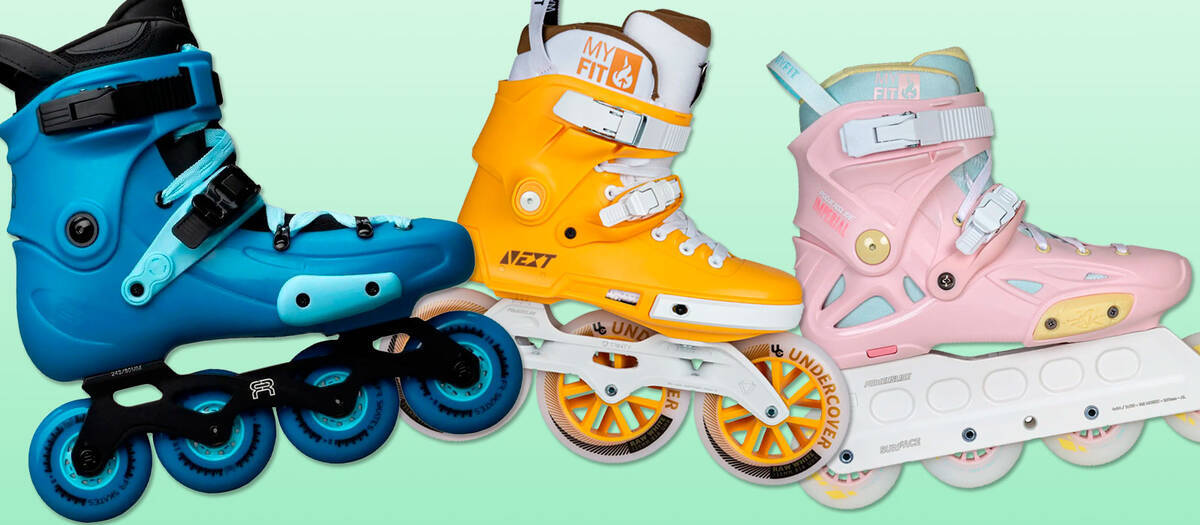
To select the ideal freeskates for yourself, it is necessary to find inline skates that complement your style and the surfaces on which you skate. This guide will take you through the crucial elements of urban inline skating and freestyle skating, aiding you in finding the perfect freeskates that suit your style and ambitions.
If you're keen to learn about urban inline skates or discover the features that make freestyle slalom skates more nimble, we hope to answer any queries you have about freeskates in the subsequent sections.
Overview
Overview
Which Inline Freeskates are Ideal for Beginners?
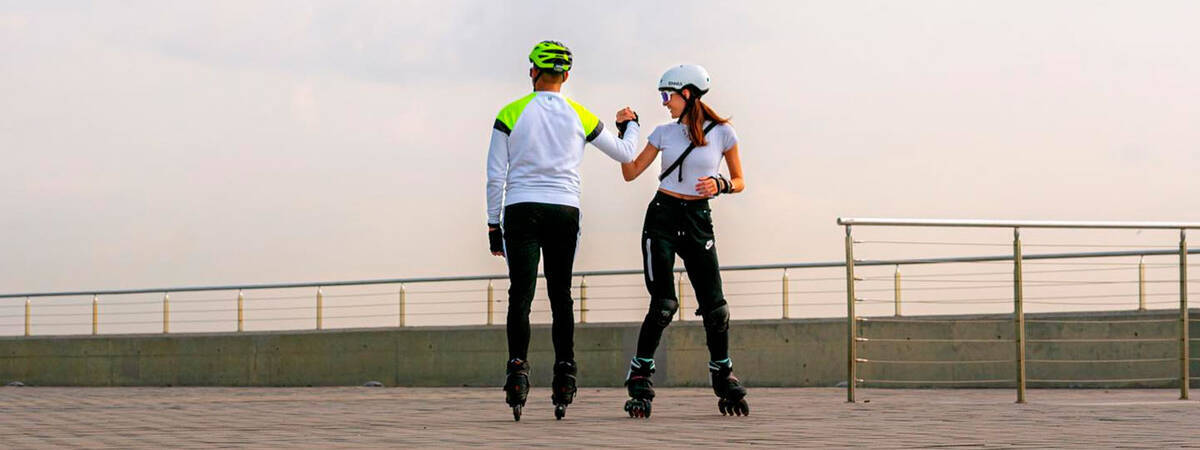
For those new to freeskating, it's advisable to acquire a flexible pair of freeskates that allows exploration of different styles within the sport. As you advance, your selections will probably be directed by the specific style you choose to focus on. The following general advice is intended for beginners interested in inline skating styles such as freeskating, freeriding, freestyle, and slalom.
When selecting inline freeskates, consider these features:
- Comfortable liners: Quality liners with ample padding and ventilation are crucial for prolonged skating. Seek out moisture-wicking and breathable materials to ensure your feet remain cool and comfortable.
- Efficient buckle system: A secure, adjustable buckle system guarantees a snug fit, offering maximum control and stability. An arrangement of buckles, laces, and straps permits fine adjustments.
- Boots: A robust hard boot is advisable for freeskating. Hard boots are durable, stiff, and impact-resistant, providing excellent ankle support to help maintain stability. Additionally, hard boots generally offer more responsiveness than soft boots.
- Ankle Support: Secure ankle support is vital to prevent injuries and assist in keeping your ankles straight when performing tricks.
- Wheel sizes: Ideally, look for wheel sizes in the range of 80 or 90 mm for extra stability. Larger wheels raise the centre of gravity, making the skates more challenging to control.
- Wheel hardness: Generally, softer wheels are considered easier for beginners as they grip better on uneven surfaces and absorb vibrations from the surface you skate on.
Consider the aforementioned guidelines when browsing our freeskates selection. Additionally, you can filter products by skill level to view models recommended for your expertise.
What Constitutes Urban Skating?
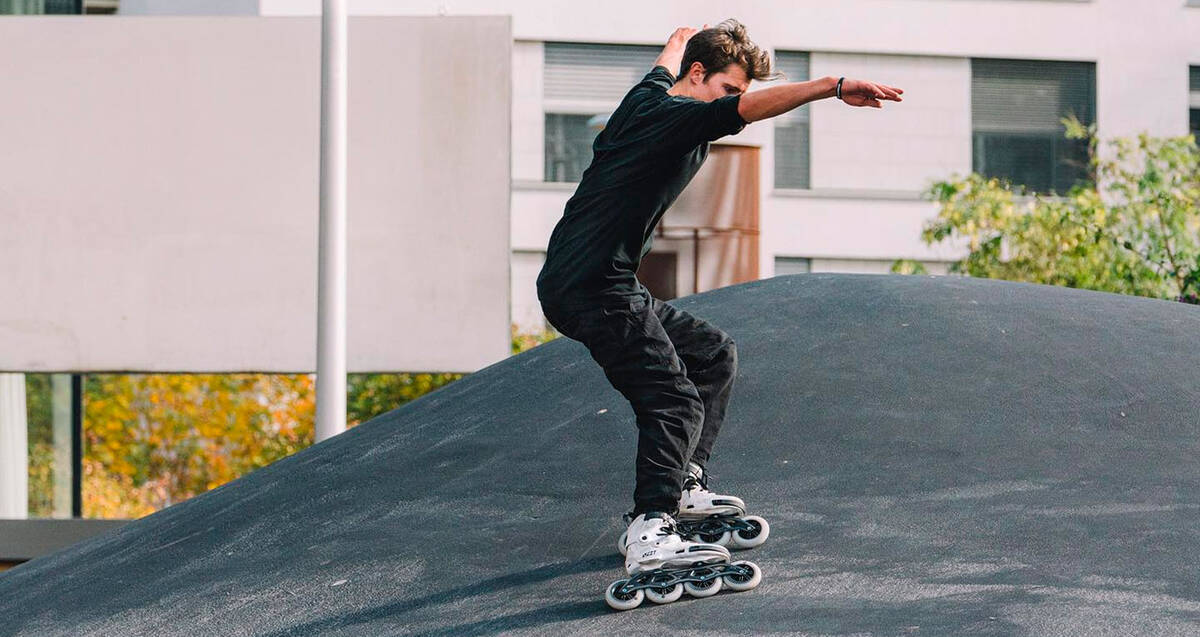
Urban skating, also termed street skating, involves traversing the city with swiftness and style. It includes jumping over obstacles, descending stairs, and moving smoothly through the cityscape. While it shares some elements with aggressive skating, such as stair-descending and wall-riding, it excludes grinding. Urban freeskates aren't designed for rail-involved tricks but excel in energetic, dynamic skating.
Which Urban Inline Skates are the Best?
Urban skating necessitates a hard boot for durability and a solid frame for impact-resistance. Comfort is essential as the skates are worn for extended periods. Look for skates with well-cushioned liners that afford both comfort and support.
Which Wheels are Ideal for Urban Skating?
Urban skates come with wheels crafted for speed and agility, with common diameters ranging from 80 mm to 110 mm. If your urban skating entails long distances, larger wheels assist in speed and momentum maintenance, while smaller wheels offer enhanced control. For tricks, 100 mm wheels might feel more comfortable than 110 mm ones.
Wheel hardness for urban skates varies from 82A to 88A. Softer wheels provide an advantage on rough and uneven surfaces by absorbing more vibration.
Learn more about inline skating wheels:
Understanding Freestyle Skating

Freestyle skating emphasizes precision and technical movements involving spins, jumps, and slides. It primarily occurs on flat ground, often with lines of cones for the skater to weave through in various patterns.
The Role of Flow in Freestyle Skating
Flow is key in freestyle inline skating, referring to seamless transitions between movements while maintaining control and balance. Freestyle skating often mirrors figure skating, with skilled freeskaters appearing to hover effortlessly above the ground.
Clarifying Slalom Skating
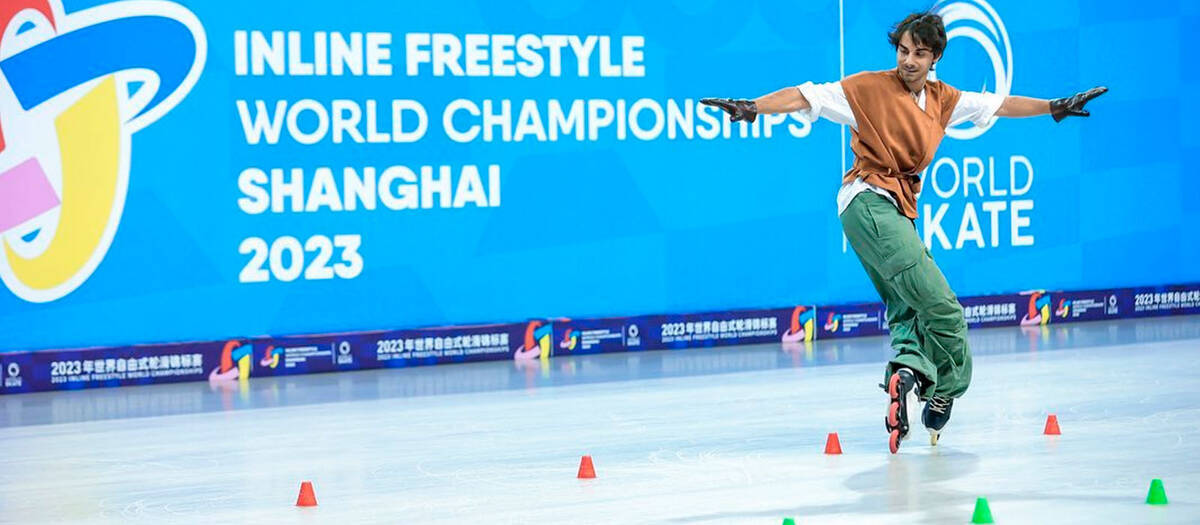
Slalom skating is a discipline focused on weaving between cones with speed and precision, requiring agility, balance, and excellent footwork. Skates designed for slalom typically have smaller wheels and a shorter frame for improved manoeuvrability.
What Constitutes a Good Slalom Skate?
A shorter frame and smaller wheels are crucial for agility when choosing slalom skates.
Advanced slalom skaters favour a rockered wheel setup, with the two center wheels larger than the front and rear wheels, enhancing manoeuvrability and assisting with executing tricks. However, rockered setups are challenging for beginners, complicating the learning of basic moves.
Beginners may use most freeskates for slalom skating, but as skill increases, exploring features that enhance precision and control becomes essential. A rockered wheelbase significantly boosts flow during slalom skating. Also, a noteworthy consideration is the liner—advanced skaters often prefer built-in liners for increased precision and responsiveness.
Comparing Urban Skating and Freestyle Skating
Urban skating and freestyle skating share many similarities, and they need not be strictly separated.
Urban skating concentrates on overcoming city obstacles and varied terrains. Pursuing urban skating likely involves jumping, rolling downstairs, or manoeuvring around confined spaces, integrating elements from both fitness skating and aggressive skating.
Freestyle skating, contrastingly, centres on grace and precision, comparable to dancing on wheels, with movements designed for fluidity and elegance. Freestyle skating sometimes aligns closely with slalom skating.
Despite overlapping features, urban skating emphasizes traversing the city, utilizing creative architectural features, whereas freestyle occurs on flat, smooth surfaces. In urban skating, traffic is navigated, while in freestyle skating, the weaving is between cones.
Do you favour the fast-paced, raw appeal of urban skating, or are the artistic aspects of freestyle skating more captivating? The answers to such questions will influence your choices for future freeskate setup enhancements.
Should I Opt for 3-Wheeled or 4-Wheeled Freeskates?
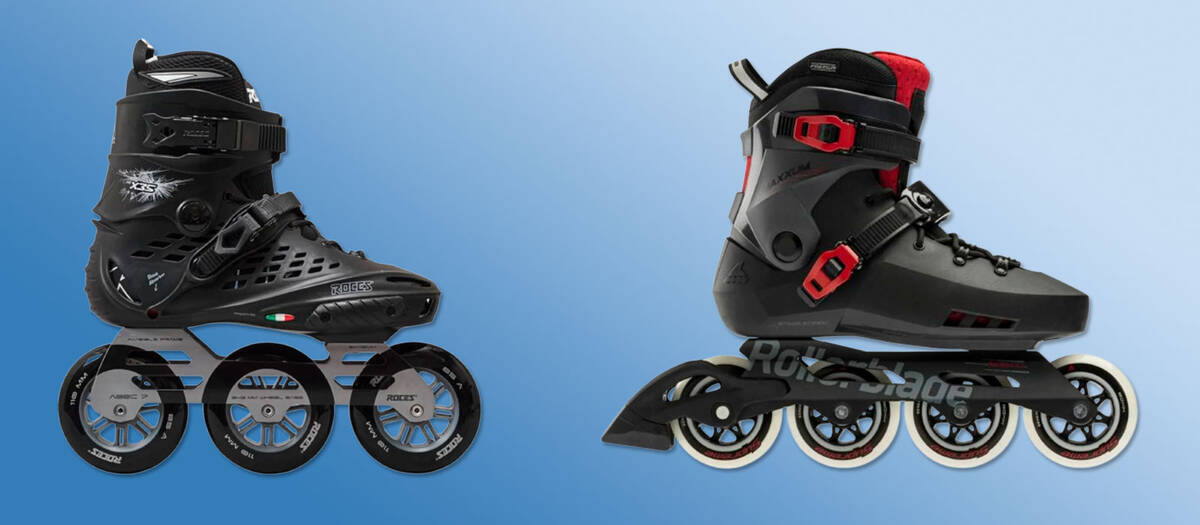
Here's a breakdown of factors to consider when deciding between 3-wheeled or four-wheeled inliners:
- Always four wheels for beginners: Four-wheeled skates offer greater stability, thus being preferable for inline skating beginners.
- Advantages of triskates: Three-wheeled skates present distinct advantages for more seasoned skaters, with their shorter wheelbase enhancing manoeuvrability, allowing for tighter turns and easier execution of tricks. They also accommodate larger wheels, ideal for those covering distances.
- Wheel size: Triskates permit larger wheels without elongating the skate, contributing to greater speeds while retaining agility, especially beneficial for skaters looking to boost their performance.
Choosing between 3-wheeled or 4-wheeled skates is not a question of right or wrong but of style and preference.
Is a Rockered Wheel Setup Better for Freeskating?
For experienced freestyle skaters, a rockered wheel setup can be transformative. This configuration, where the front and rear wheels are slightly smaller than the middle ones, creates a curved wheelbase that enhances manoeuvrability.
However, beginners might find a rockered setup unstable and harder to control, complicating the learning of basic techniques. Newcomers should begin with a flat wheel setup for more stability, allowing confidence to build before transitioning to a rockered setup.
Examining different models reveals some skates as ‘rockerable’, permitting adjustment of the front and back wheels to achieve higher positioning for increased agility. A rockered setup is also achievable by rotating wheels in a pattern where outer wheels wear down faster than the centre ones.
Caring for Your New Freeskates
To keep your freeskates in top condition, consider these guidelines. After a period of skating, rotate the positions of your skate wheels in the frames and flip them to ensure even wear on both sides. Wheel rotation is an aspect where most skaters develop personal routines, but refer to our guide if unsure of how to start.
We also provide guides on cleaning and lubricating bearings, and general maintenance for inline skates, including washing tips to avoid unpleasant odours in liners.
Freeskate Sizing Guide
To ensure a smooth and comfortable freeskating journey, consider these sizing tips:
- Refer to the size guide: Consult the size guide on each product page to ensure an accurate fit.
- Match your shoe size: For optimal comfort, choose a size close to your regular shoe size.
- Opt for a snug fit: A tight fit provides enhanced control and stability during skating.
Essence of Skate Protection
Using certified protective equipment is strongly advised for superior safety and durability. At SkatePro, our protective gear adheres to the EN 1078 standards and undergoes thorough testing by expert skaters. Quality protection boosts confidence, enabling quicker learning of tricks and mastery of technical skills, as it offers security when reaching new limits.
